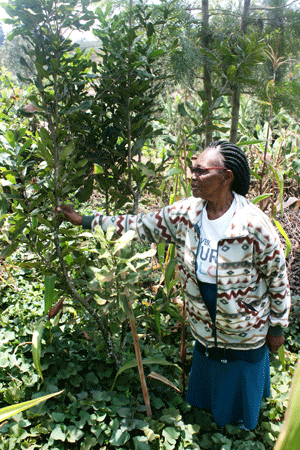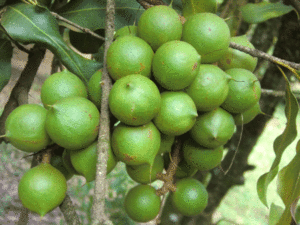
Macadamia crop takes Murang’a by storm
When Charity Wambui walked through the gates of her newly constructed homestead, several years ago after receiving her retirement letter from her employer, she hardly knew where to begin. Her knowledge on farming was almost non-existent. The coffee sector that many farmers in the region relied on for decades was collapsing and many growers had embarked on uprooting it due to poor returns. However, her willingness to learn and get down to sheer hard work by adopting a new crop for cultivation has paid off handsomely and she is an excellent example of emerging farmers.
Before this, Wambui who hails from Karueno Village, Kiharu Constituency was a teacher having practiced it for three decades. However, the idea of farming began to hold more and more appeal when farmers in Murang’a County began to embrace Macadamia cultivation thanks to companies such as; Jungle Nuts, Equatorial Nut, Sasini among others. These companies buy nuts as well as educate, provide farmers with skills, knowledge and inputs relevant for their day today farming activities.

“They also provide us with grafted seedlings for planting. They retail at 350 shillings per seedling. These companies also place special emphasis on ensuring all products are grown organically and are free of any harmful additives,” Wambui stated.
She attests that macadamia are easy to grow unlike other fruits as they do well in different types of soil, do not require a lot of water and attention. They are fairly resistant to drought and average rainfall distribution is adequate for proper plant development.
Grafted macadamia trees take close to three years to be ready for flowering, fruiting and can be harvested each season for a period of three to four months. On average, Wambui states that a single tree can yield to a maximum of thirty kilograms of nuts in a season. The best harvesting season for the nuts in this region is between the months of April to June.
“Once the nuts are ready, I usually source for laborers to assist me with harvesting and de-husking the green coating husk from the nuts. We mostly do it by hand and using crude tools. The husks hold moisture which if not removed will cause the nuts to become rancid and make them unmarketable. The nuts then need to be dried in shade for at least two weeks. During the last harvesting season, I harvested 1,500 kilograms which I sold to Jungle Nuts Company at 110 shillings per kilogram. I managed to get 165, 000 Kenya Shillings,” Wambui said.
For her to have a plenteous harvest, she adopts several management practices which involves: removal of excess branches which reduces yields, use of chemicals to control termites which usually feed on the base causing the trees to rot thus leading to them drying.
At the moment, there are over thirty trees on her five acre piece of land. Planting this crop entails digging a big hole and mixing the soil with manure. The size of the hole assists the plant to retain water which is essential for its initial development. “When planting macadamia, it’s advisable to intercrop them with other crops, but those which won’t grow taller towering than them; I usually inter crop them with maize, bananas, as well as indigenous vegetables,” she averred.
The biggest challenge she grapples with is wild cats (known as Gituyu, in Kikuyu dialect) which is causing havoc on her macadamia trees. The animal peels the nuts leaving them to rot. To control it, she has set up traps and also drops poisoned foods in their holes hide outs.
As she continues to enjoy her retirement, Wambui has been able to diversify to goat and cattle rearing. All this she has managed with proceeds from Macadamia. At the moment, she is venturing into farming the new Hass variety of Avocados.


